Imaging Black Holes
Sagittarius A* (Sgr A*) is the radio source associated with the
dynamical center of the Galaxy. It is quite bright in absolute terms,
but relative to the Eddington luminosity, roughly the maximum
luminosity possible from an accretion powered object, it is many
orders of magnitude underluminous. That is, our supermassive black
hole is something of an underachiever! It is also a light weight,
weighing in at around 4 million solar masses (compared to more typical
supermassive black hole masses of a billion solar masses).
Nevertheless, it provides the first opportunity we have to image the
black hole with a resolution sufficient to resolve its event horizon.
This would be done with a global network of sub-millimeter radio
telescopes, phased together into a large array to form a telescope
whose effective size is the entire earth. This is similar to the
existing Very Long Baseline Array which operates at wavelengths above
3 mm. Significant progress has already been made on this, with a
recent observation by Doeleman and collaborators actually resolving
Sgr A* on a Hawaii-Arizona baseline.
Here you can find some figures and movies of theoretical images of the
supermassive black hole in the center of the Milky Way, Sgr A*. That
is, you can see some pictures of what we might expect to find as this
new observational capability is developed further!
Images of Accretion Flows
The observed luminosity of Sgr A* is presumably produce by the
liberation of gravitational potential energy as gas is captured and
falls into the black hole. Here we show a few images of the Radiatively
Inefficient Accretion Flow (RIAF), presumed to exist around Sgr A*.
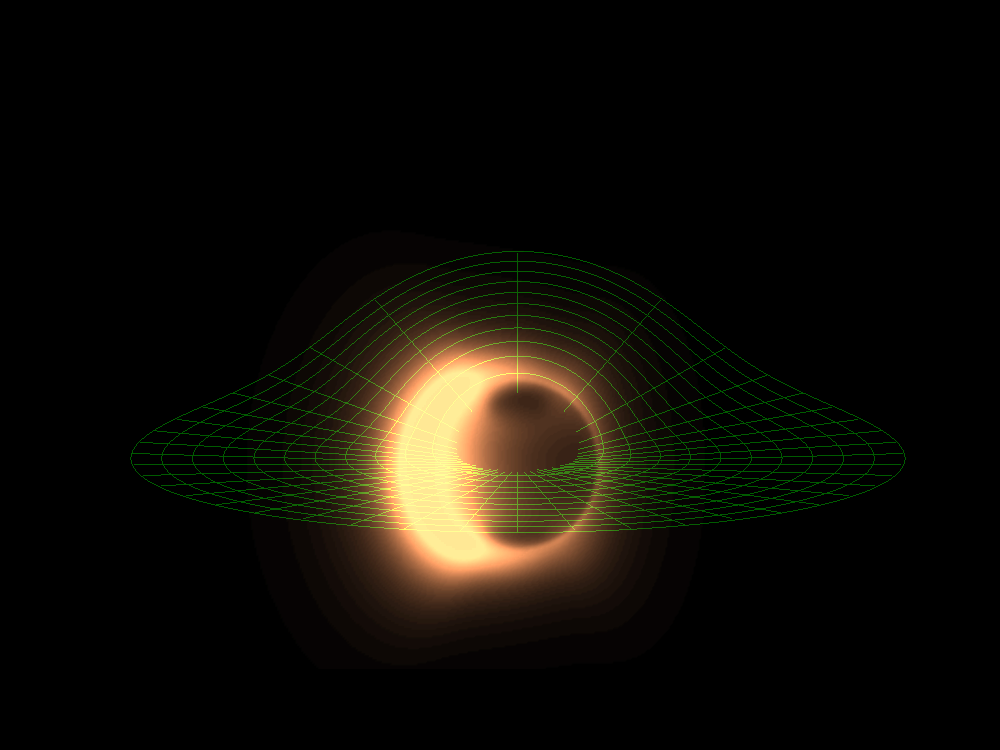
|
An image of a RIAF around a non-spinning (Schwarzschild) black
hole viewed from an inclination of 10° .
To show the extreme lensing, the coordinate grid in the equatorial
plane are shown by the green grid (radius and azimuthal angle). Note
how the strong lensing around the black hole bends the back of the
disk up and into view. (Click image for hi-res version.)
|
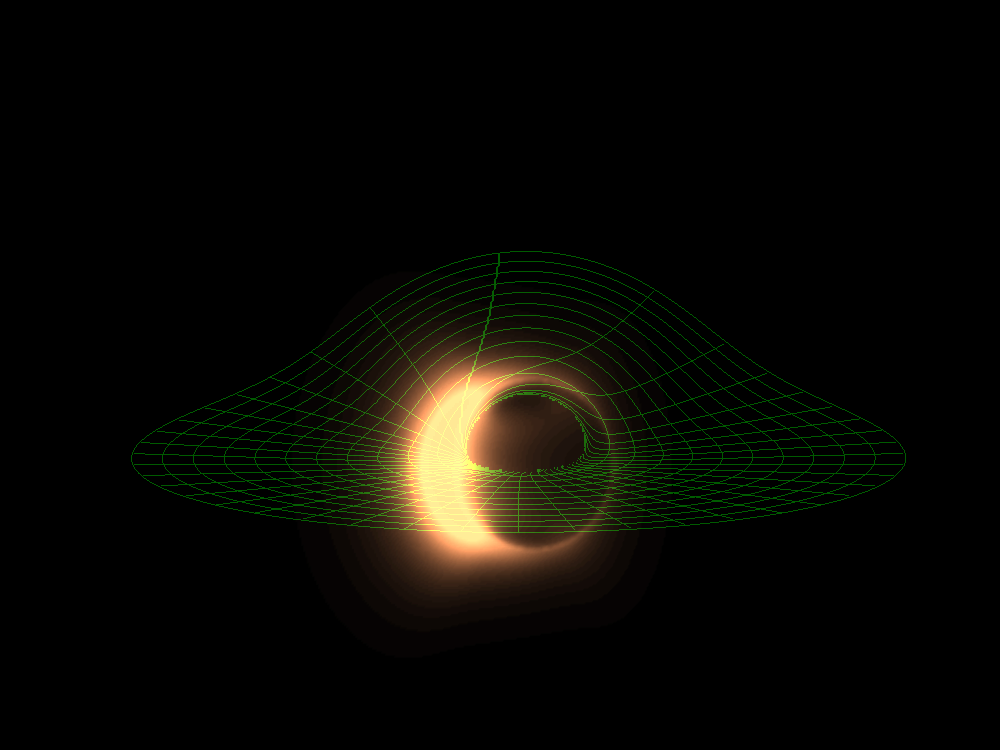
|
An image of a RIAF around a moderately spinning black hole viewed
from an inclination of 10° .
Note how the spin of the black hole twists the coordinates around
it. (Click image for hi-res version.)
|
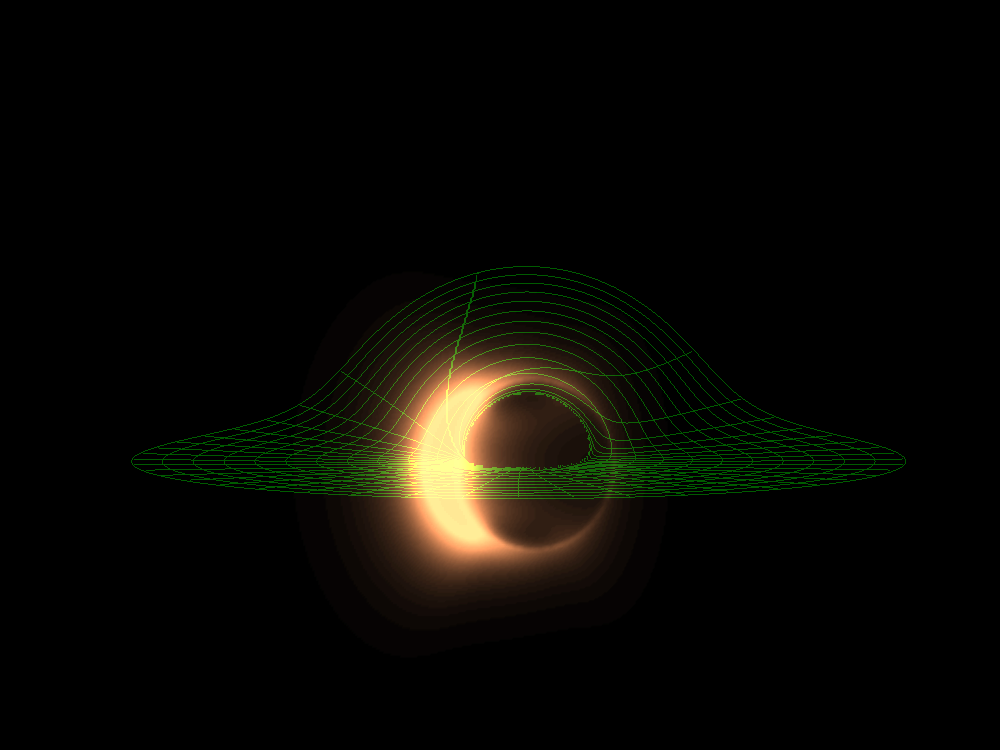
|
An image of a RIAF around a moderately spinning black hole viewed
from an inclination of 5° .
(Click image for hi-res version.)
|
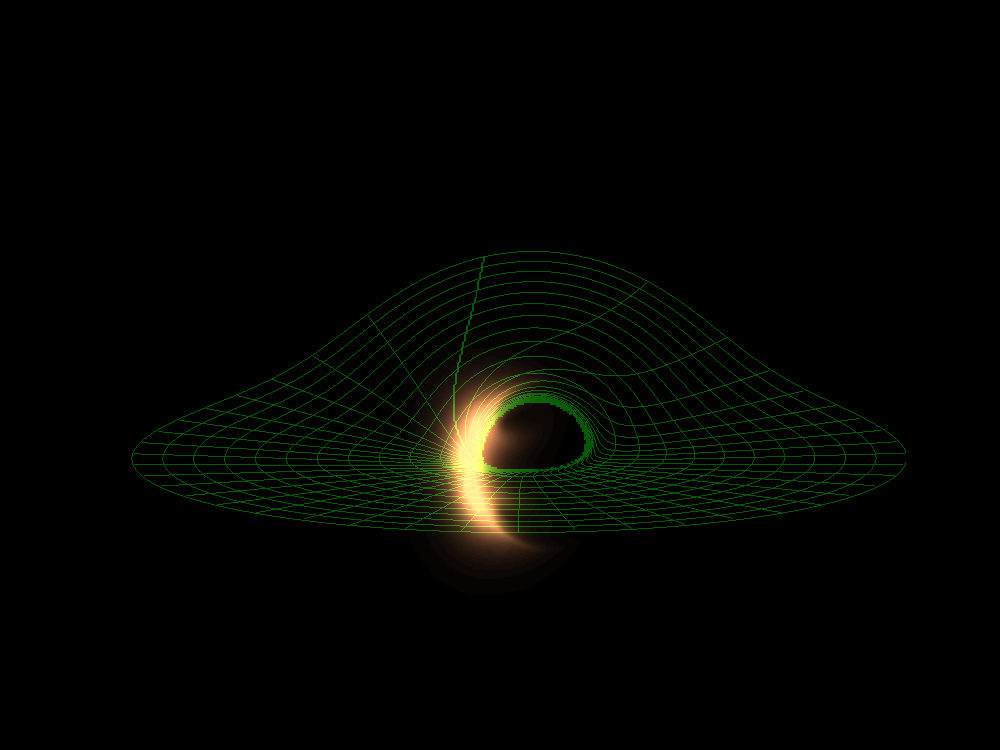
|
An image of a RIAF around a rapidly spinning black hole viewed
from an inclination of 10° .
(Click image for hi-res version.)
|
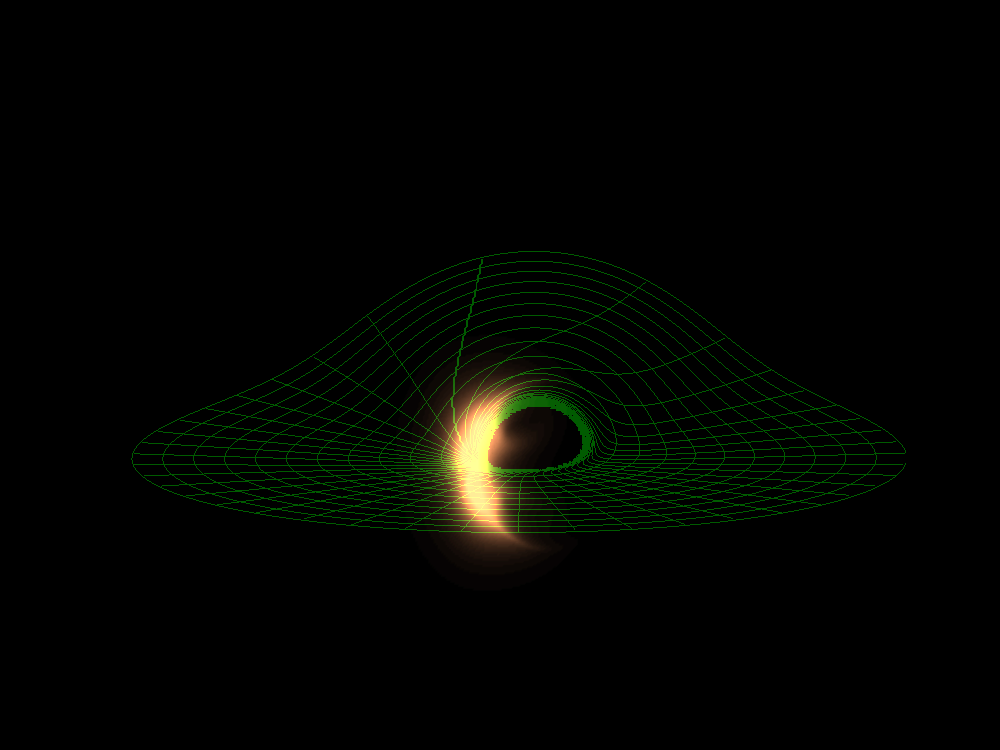
|
An image of a RIAF around a maximally spinning black hole viewed
from an inclination of 10° .
(Click image for hi-res version.)
|
Images of Hot Spots
Sgr A* is strongly variable, showing enhancements in its infrared
luminosity by orders of magnitude on timescales comparable to the
light-crossing time of the horizon. These are inferred to be the
result of stochastic dissipative events within the accretion flow,
such as strong shocks or magnetic reconnection events (like those that
produce solar flares on the Sun). Such events will also necessarily
remain strongly localized, producing hot spots in the accretion flow.
These hot spots can be used to learn about General Relativity in much
the same way the orbits of the planets shed light upon gravity in the
Newtonian regime. Ultimately, we should be able to verify if General
Relativity properly describes gravity around black holes!
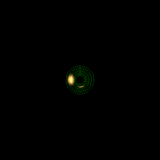
|
Hot spot orbiting a non-rotating black hole.
This shows the hot spot from a variety of inclinations, first zooming
in and then panning from along the orbital axis to edge on in the
orbital plane.
Note the presence of a secondary, and sometimes tertiary, image.
These are produced by light-rays that spend more time near the
horizon, and thus encoded in them is information about strong gravity.
(Right-click image to download high-res version (17M!), which can be
viewed in QuickTime.)
|

|
Hot spot orbiting a rapidly-rotating black hole.
This shows the hot spot from a variety of inclinations, first zooming
in and then panning from along the orbital axis to edge on in the
orbital plane.
In this case the secondary image persists throughout the entire
orbit. This is a consequence of two things: the twisting up of space
around the black hole due to its rotation and the much smaller
inner-most stable circular orbit. (Right-click image to download high-res version (15M!), which can be viewed in
QuickTime.)
|
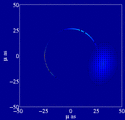
|
Hot spot orbiting a non-rotating black hole.
This shows the hot spot from an inclination of 45° with
polarization tickmarks. Note that the polarization tickmarks in the
higher-order images are generally not aligned with the primary,
resulting in a net depolarization of the source.
(Right-click image to download high-res version (2.7M!), which can be viewed in
QuickTime.)
|
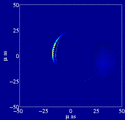
|
Hot spot orbiting a rapidly-rotating black hole.
This time the hot-spot orbit is the at the same coordinate distance as
for the non-rotating black hole. (Right-click image to download
high-res version (2.2M!), which can be viewed in QuickTime.)
|
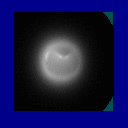
|
Hot spot orbiting a non-rotating black hole in an accretion flow
at 7mm.
The opacity of the accretion flow hides small spots at long wavelengths,
highlighting the importance of moving to the sub-millimeter. However,
for hot spots on large orbits these can be seen, in principle, at long
wavelengths as well. (Right-click image to download
high-res version (4.9M!), which can be viewed in QuickTime.)
|
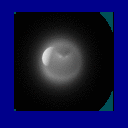
|
Hot spot orbiting a non-rotating black hole in an accretion flow
at 7mm.
In this case the hot spot is bigger, corresponding to roughly the
hot-spot luminosities observed at 7 mm. (Right-click image to download
high-res version (5.3M!), which can be viewed in QuickTime.)
|
Do Horizons Exist?
Recent radio & infrared observations have now made it all but
impossible for Sgr A* to not have an event horizon. This represents
the first conclusive test of General Relativity's most shocking
result, the existence of compact horizons, regions of spacetime that
pinch off from the exterior universe.




